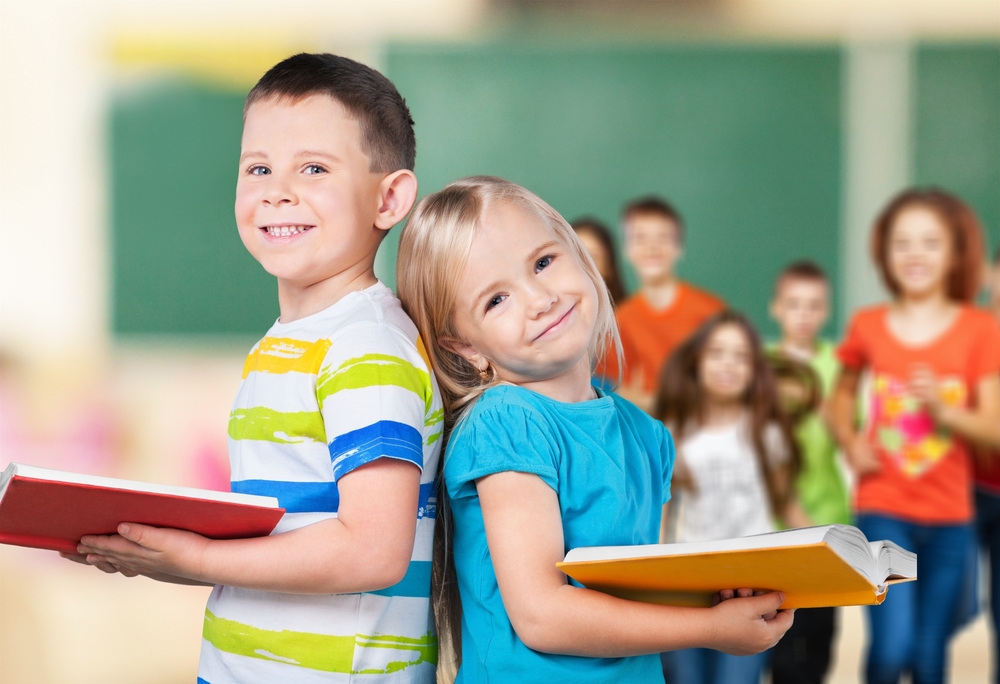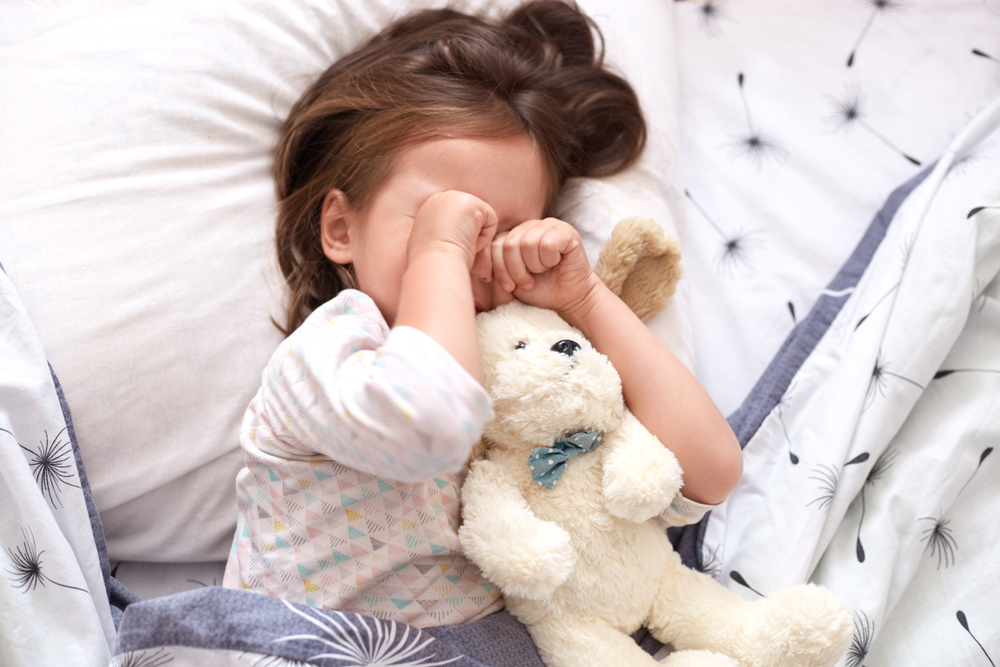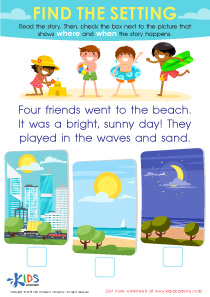Story sequencing Easy Worksheets for Ages 3-7
3 filtered results
-
From - To
Discover our engaging Story Sequencing Easy Worksheets designed specifically for children aged 3-7. These interactive worksheets help young learners develop essential cognitive skills by putting familiar stories in the correct order. With colorful illustrations and age-appropriate content, kids will enjoy piecing together tales from their favorite characters. Each worksheet encourages critical thinking, enhances comprehension, and fosters creativity through hands-on activities. Perfect for parents and educators, these resources can be used in the classroom or at home to make learning fun. Start your child’s storytelling journey today with our easy-to-use sequencing worksheets that build foundational literacy skills!
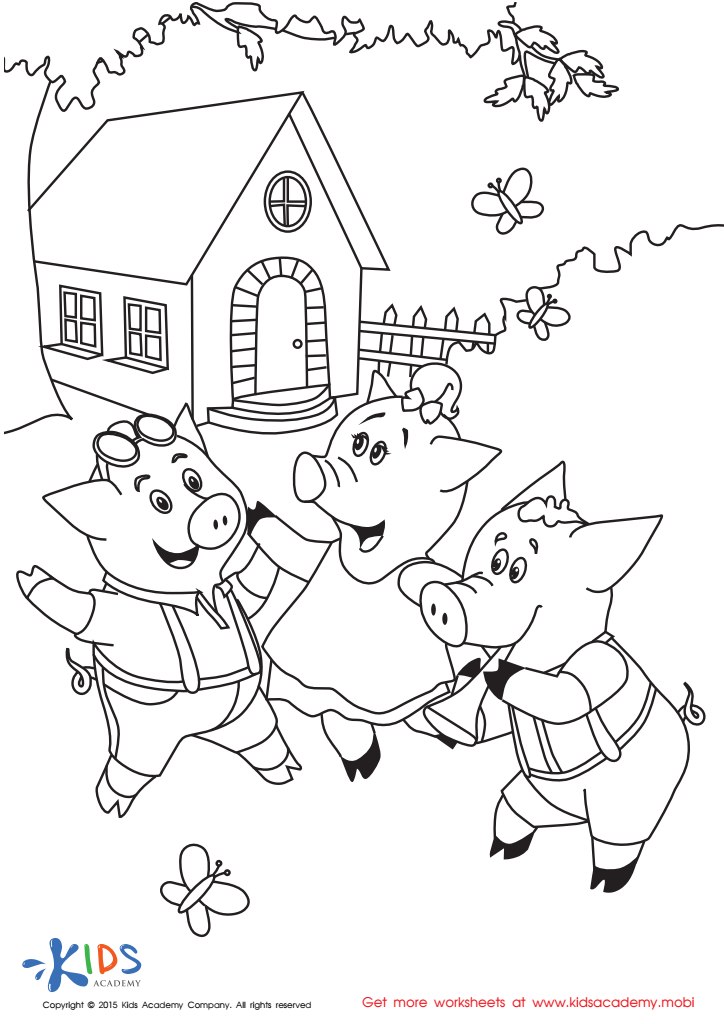

Folktales Printable PDF Worksheet: The 3 Little Pigs
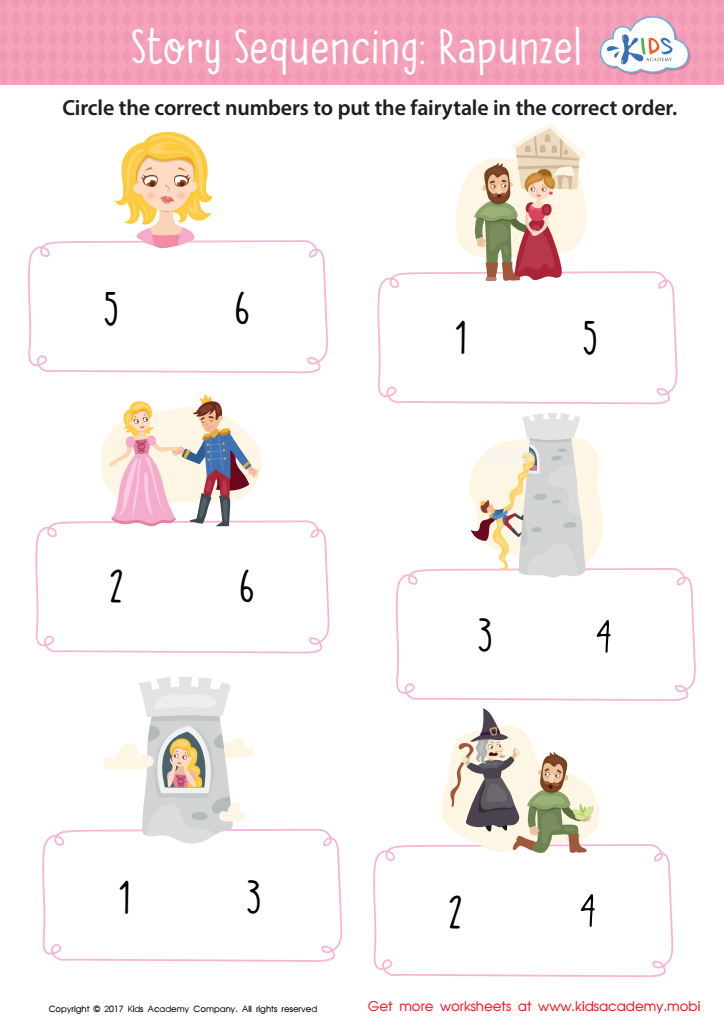

Rapunzel Story Sequencing Worksheet
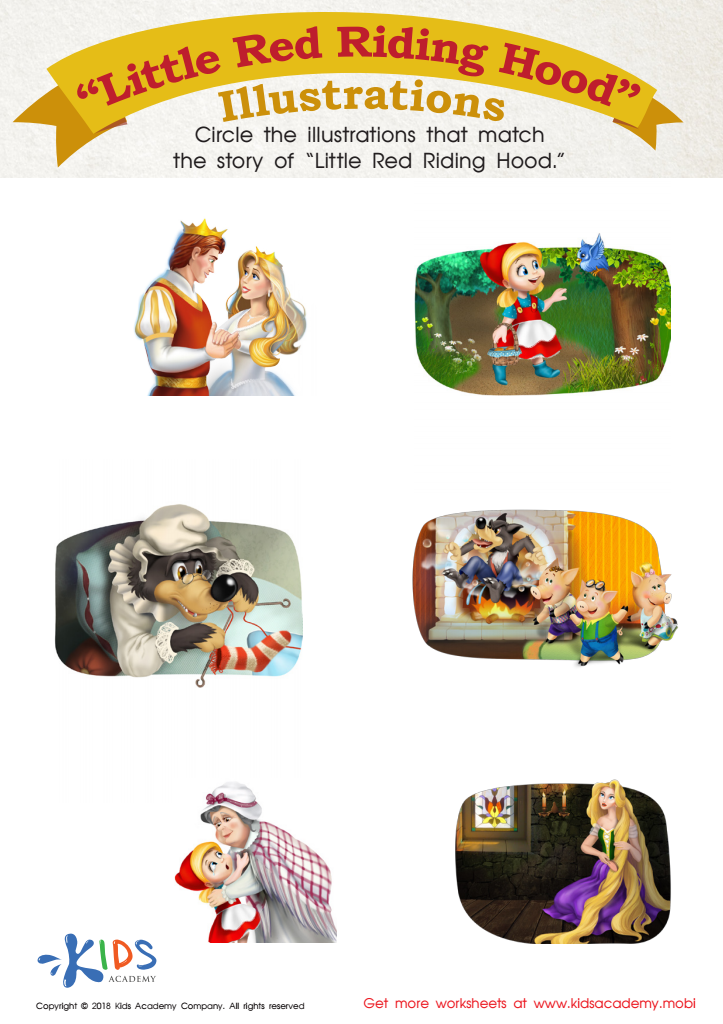

Little Red Riding Hood: Illustrations Worksheet
Story sequencing is an essential skill for young children aged 3 to 7, as it plays a crucial role in their cognitive and language development. Understanding the order of events in a story helps children comprehend narratives better, improving their overall literacy skills. When children can sequence stories, they learn to identify beginnings, middles, and ends, fostering critical thinking as they predict outcomes and infer motives.
For parents and teachers, promoting story sequencing enhances children's ability to express their thoughts and share experiences coherently. This skill encourages creativity in storytelling and improves memory retention as they recall sequences more effortlessly. In a broader context, story sequencing supports social-emotional learning. By interpreting the motives and emotions of characters, children develop empathy and better relate to their peers.
Furthermore, sequencing activities can be fun and engaging, making learning feel like play. Simple activities — like using picture cards or interactive storytelling apps — can cultivate a child’s interest in reading, laying the foundation for a lifelong love of literature. Thus, prioritizing story sequencing is vital for early educators and parents who wish to foster holistic development, enhancing essential skills that children will carry into their future academic pursuits and social interactions.
 Assign to My Students
Assign to My Students





